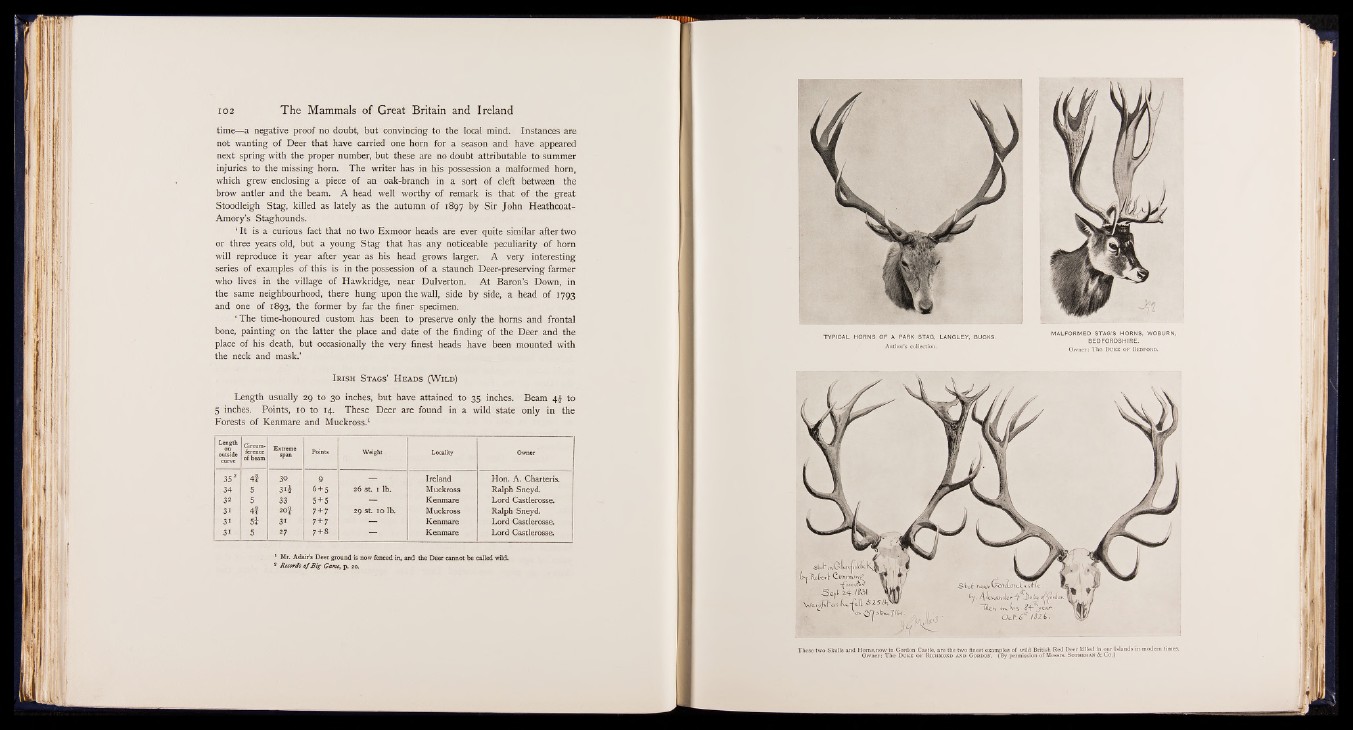
time— a negative proof no doubt, but convincing to the local mind. Instances are
not wanting of Deer that have carried one horn for a season and have appeared
next spring with the proper number, but these are no doubt attributable to summer
injuries to the missing horn. The writer has in his possession a malformed horn,
which grew enclosing a piece of an oak-branch in a sort of cleft between the
brow antler and the beam. A head well worthy of remark is that of the great
Stoodleigh Stag, killed as lately as the autumn of 1897 by Sir John Heathcoat-
Amory’s Staghounds.
‘ It is a curious fact that no two Exmoor heads are ever quite similar after two
or three years old, but a young Stag that has any noticeable peculiarity of horn
will reproduce it year after year as his head grows larger. A very interesting
series of examples of this is in the possession of a staunch Deer-preserving farmer
who lives in the village of Hawkridge, near Dulverton. At Baron’s Down, in
the same neighbourhood, there hung upon the wall, side by side, a head of 1793
and one of 1893, the former by far the finer specimen.
‘ The time-honoured custom has been to preserve only the horns and frontal
bone, painting on the latter the place and date of the finding of the Deer and the
place of his death, but occasionally the very finest heads have been mounted with
the neck and mask.’
I r i s h S t a g s ’ H e a d s (W i l d )
Length usually 29 to 30 inches, but have attained to 35 inches. Beam 4^ to
5 inches. Points, 10 to 14. These Deer are found in a wild state only in the
Forests of Kenmare and Muckross.1
outside
Cfeirrcenumce
of beam
Extreme Points Weight Locality 0™ "
35 2 4t 30 9 — - Ireland Hon. A . Charteris. 1«
34 5 3i£ 6 + 5 26 s t i lb. Muckross Ralph Sneyd.
32 5 33 5 + 5 — Kenmare Lord Castlerosse.
3i m 20f 7 + 7 29 st. 10 lb. Muckross Ralph Sneyd.
3i si 31 7 + 7 Kenmare Lord Castlerosse.
3i 5 27 7+8 — Kenmare Lord Castlerosse.
1 Mr. Adair’s Deer ground is now fenced in, and the Deer cannot be called wild.
* Records o f B ig Game, p. 20.